

John Young
Charles Duke
Thomas “Ken” Mattingly
Barbara Matelski
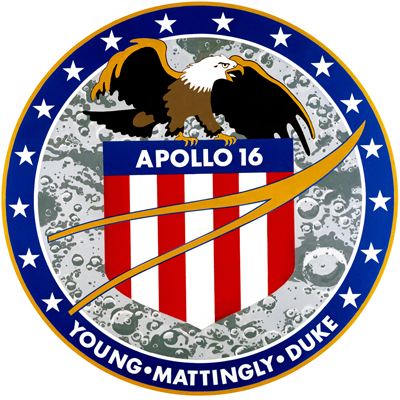
Each crew selected their own special flight patch. John, Ken and I had several basic ideas we wished to incorporate to commemorate our mission: patriotism, teamwork, and the moon. We wanted these ideas, plus the mission number and the names of the crew, to be displayed on our patch, and talked with a NASA graphic artist who designed exactly what we wanted.
Basically, the design was a brown and white eagle with wings outstretched, perched atop a red, white, and blue American seal, over a gray lunar surface background. To show teamwork, the yellow NASA wishbone symbol of flight was placed on top of the seal, and then across the seal were written the words Apollo 16. Circling a blue and gold border were our names — YOUNG, MATTINGLY, and DUKE — and sixteen white stars to emphasize outer space and the number of our flight. We were very proud of this patch, which to us symbolized Apollo 16.
—Charles Duke, Moonwalker
Among the Apollo patches, the shield design motif appears only on this patch and the Apollo 10 patch — and John Young was a crewmember on both flights.
What Charlie Duke called a “wishbone” is a design element from the NASA insignia, which itself was derived from design elements of the official NASA seal that was designed in 1959. According to a description of the insignia, “the red chevron is a wing representing aeronautics (the latest design in hypersonic wings at the time the logo was developed).” The “chevron” (often referred to as a “vector”) was also used as a design element of the STS-26 patch, the first Shuttle mission to fly following the Challenger launch explosion.
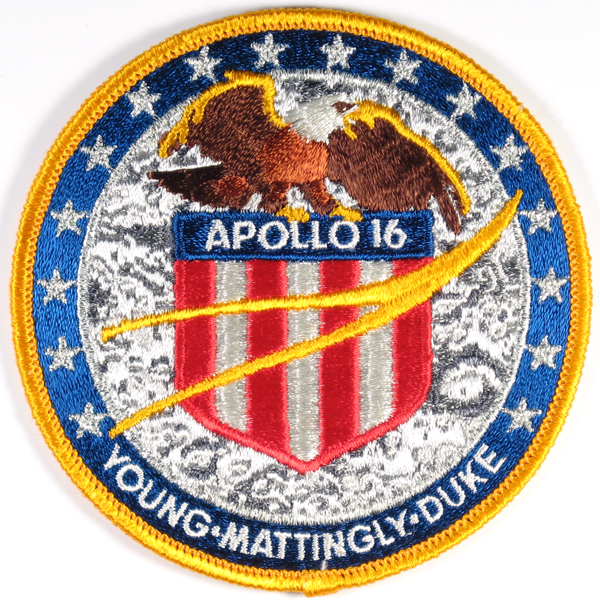
[ap16-em3]
The Lion Brothers embroidered Apollo 16 patch. The shield
is bordered in red on the bottom, deviating from the artwork
and clearly distinguishing this from the AB Emblem version.
Metallic silver thread is used in the stars and the border
just inside the blue band. The yellow in this patch is
slightly orange, which in this respect makes it closer to
the artwork.
106mm dia

The Lion Brothers hallmark — the number “16” upside down beneath the tip of the yellow “flight” symbol.
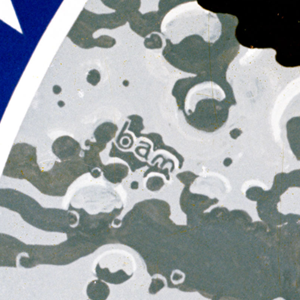
The artist, Barbara A. Matelski, inserted her initials near the eagle’s tail as a small detail in the lunar surface background.

The yellow “vector” design element of the Apollo 16 patch derives from the red “vector” of the NASA insignia...
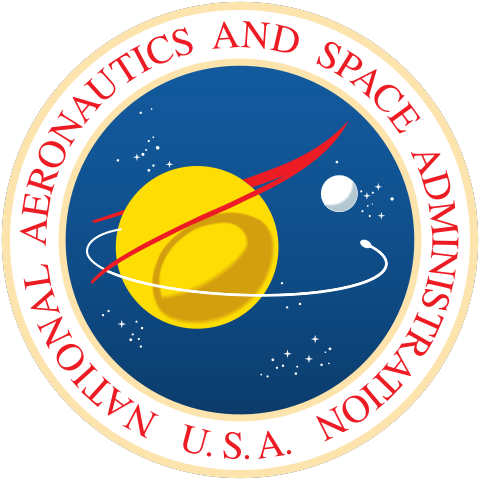
...which in turn derives from a similar element on the NASA seal, which was designed prior to the insignia.

According to Chambers, the red “vector” in the NASA seal and emblem is actually a depiction of a design for an advanced supersonic wing, a model of which the artist who had created the NASA seal, James Modarelli, had seen during a visit to Ames Research Center.
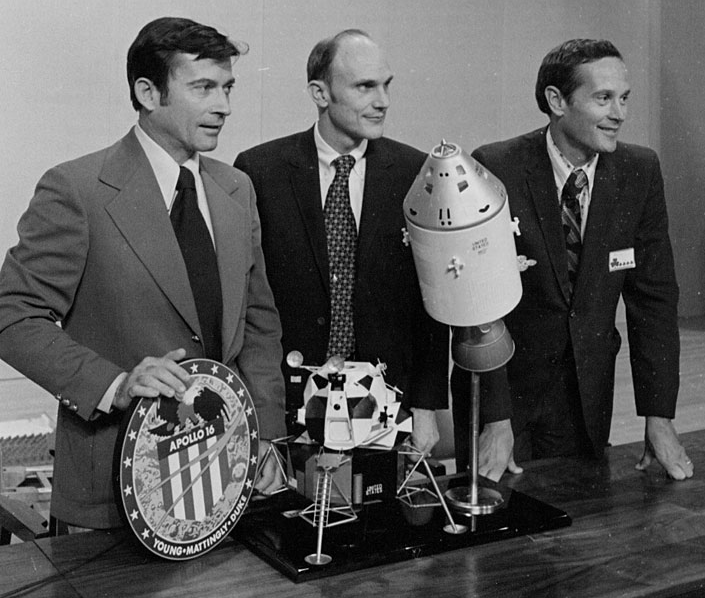
The Apollo 16 crew showing off the artwork for their patch at a press conference.